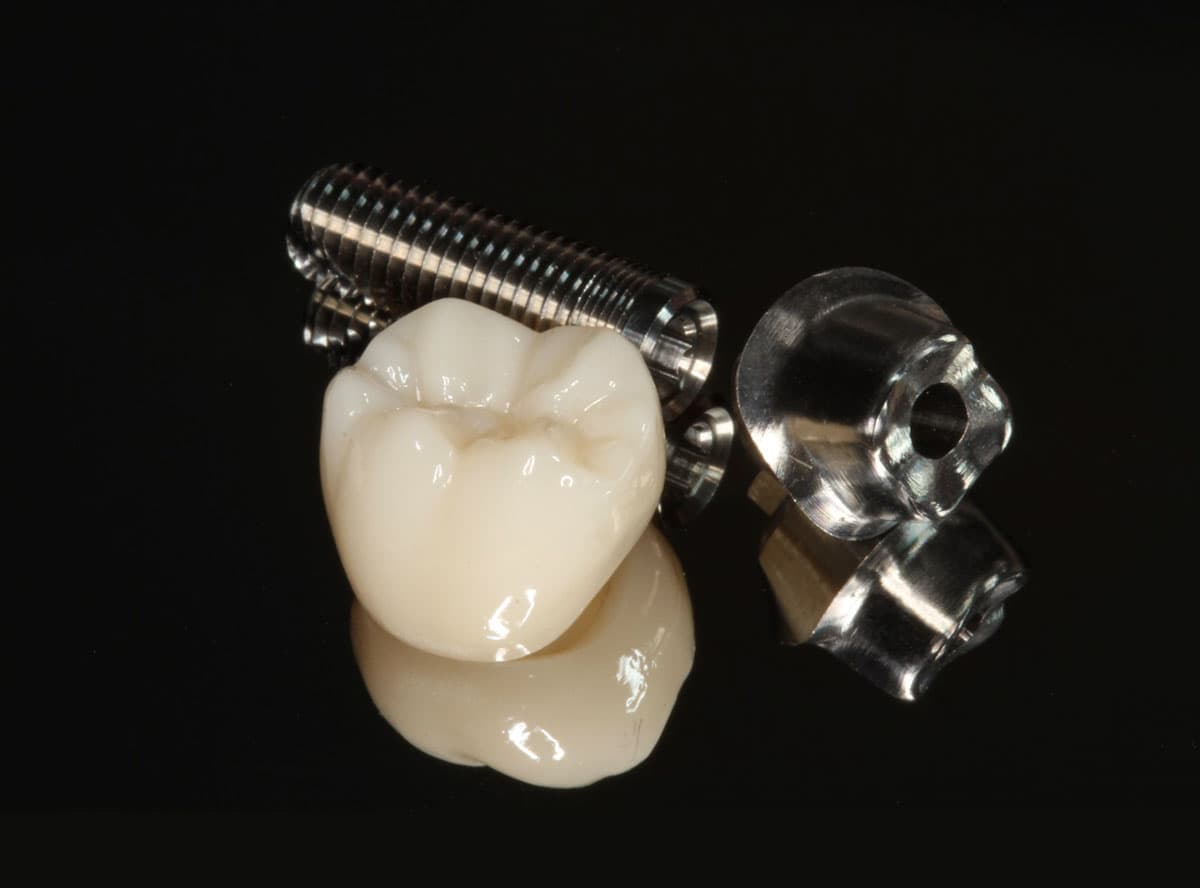Implant Restoration
Implant restorations are rapidly being accepted as the standard of care when treating edentulous or partially edentulous patients.

Cement-Retained Implant Crown
Dental implant restorations over cemented custom abutments offer both the strength and the aesthetics that your patients want. They promote natural results and optimal functionality as they are designed and milled using the same cutting-edge technology as our screw-retained implant restorations. Cement-retained implant restorations eliminates un-aesthetic screw access holes. As implant crown margins are below gum level, cement removal becomes difficult and it can lead to soft tissue irritation. Chronic irritation from cement left behind can cause bone-loss and even implant failure. A radiograph at this stage is necessary to make sure all cement has been removed. Hopefully the implant crown will never need to be removed. If there is a reason to, there may be considerable difficulty in retrieving the implant restoration and it may need to be destroyed if the cement seal cannot be broken. Where the angle of placement of the implant, is not in the long axis of the replacement tooth, then cemented restorations will usually be the only option.

Screw-Retained Implant Crown
At SK Dental Lab, we meticulously design and digitally mill screw-retained implant crowns and bridges using cutting-edge CAD/CAM technology. The strategic control of retention ensures a quick and hassle-free seating process, and, if necessary, these restorations can be easily retrieved, unlike cemented implants. Screw-retained implant restorations offer the advantage of predictable retrievability, provided that the implant is optimally positioned for the placement of the screw access hole. While having a screw access hole in aesthetically prominent areas may not be ideal, a skilled filling technique can often effectively conceal this access cavity. In the event that removal of the implant crown is required, the filling is removed, and the implant restoration can be easily unscrewed. For extensive full-arch implant reconstructions, screw retention is considered the preferred approach. Retrieving these restorations is notably less traumatic for the patient and provides a more predictable outcome for the restorative dentist compared to cemented restorations.

Surgical guide
In the field of dental implants, surgical guides are invaluable tools for ensuring secure, predictable, and effective outcomes in various implant cases. These guides play a role in guiding every step from the initial surgical planning to its execution, meeting the high standards of dental practices and patients seeking durable and aesthetically pleasing solutions. The integration of guided surgery technology significantly enhances the precision of implant placement, contributing to more predictable prosthetic results. However, clinicians should keep in mind the fundamental principles of implantology while utilizing this technology. It's important to recognize that a surgical guide serves as a template and does not replace the expertise of the clinician. Essentially, a surgical guide acts as a tool to transfer diagnostic and planning data from the pre-surgery stage to the actual surgical procedure. The accuracy of this process depends on obtaining specific data, which includes radiological information obtained from cone-beam computed tomography (CBCT) scans, intraoral surface data acquired through methods like impressions or intraoral scanning technologies, and surgical plan data detailing the desired implant positions and orientations. The successful creation of a surgical guide hinges on the combination of these data sources. However, it's crucial to emphasize the importance of support for the surgical guide to ensure stability and precision during surgery. A well-supported surgical guide is essential for accurately placing implants according to the pre-established plan.

Implant Bars/Framework
Implant bars and frameworks play significant roles in the field of dental implantology, particularly in prosthodontics. These components are essential for securely attaching dental prostheses like dentures, bridges, or crowns to dental implants. They provide the foundation for restoring missing teeth or improving the stability and functionality of existing dental prosthetics. The implant bar, typically crafted from materials like titanium or cobalt-chromium, is a customized metal framework designed to connect to multiple strategically placed dental implants in a patient's jaw. It offers a robust base for various dental prostheses, particularly removable overdentures. On the other hand, the implant framework accommodates a broader range of prosthetic restorations, including bridges, partial dentures, and fixed hybrid dentures. Like the implant bar, it is tailored to the patient's dental anatomy and implant positions, and it can be made from materials like titanium or zirconia. Both of these components are critical for providing patients with durable, biocompatible solutions that significantly enhance oral function and aesthetics after tooth loss. The precise planning and fabrication process often employ advanced digital technologies such as computer-aided design and computer-aided manufacturing (CAD/CAM) to ensure precise fits and optimal outcomes.
